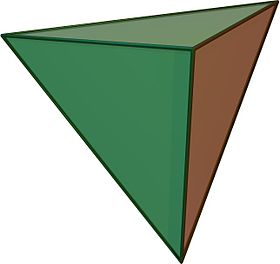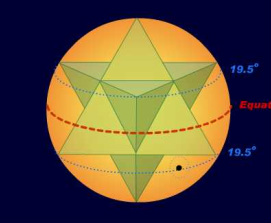The above image/link is of an Excel file showing that for n=4 case, the quantized angular momentum equation predicts the proton mass and disputed (muonic hydrogen) proton charge radius ($r_p=0.8412fm$).
The quantized angular momentum is calculated as shown on the previous post by using the de Broglie hypothesis, which amounts to assuming photonic (boson) energy with no rest mass, thus the equation for momentum applies:
$$p=m\nu={h\over\lambda}$$
and after solving for angular momentum, one gets
$$mr={nh\over2\pi c}$$
and for the $n=4$ case, the proton mass-radius product:
$$m_pr_p={2h\over\pi c}=4\ell m_{\ell}$$
All of the mass-energy of the proton is contained within a stable vortex in the aether of spherical radius, $r_p$. This is possible when one begins to examine the problem more completely as we have done previously, and that is to consider the vacuum energy density as Haramein has, and realize the proton is a stable oscillation in the Planckian aether, which is such high density, it behaves like a black hole and the photonic energy creates a path in 3D space where the aether flows or energetically vibrates.
Since the energy density of the vacuum is so high, the conditions for wormhole connected space are met, then the proton could be envisioned as an energetic vibration in the aether, and it is likely a stable vortex flow. There is much more implied by this view which will be examined in future posts.
The picture of the proton is then some 3D oscillation in the aether, thus perhaps the problem could be approached from aether dynamics and shown, in the limit, that the detailed solution approaches this post's approach, which is a lumped mass-radius idea coming from reductionist 1D-2D Cartesian physics approach rather than a whole 3D approach that includes interaction with the vacuum, i.e., resolution to the vacuum catastrophe.
The photon wavelength is:
$$\lambda={\pi\over 2}r_p$$
The photon frequency is:
$$f={2c\over \pi r_p}$$
The photon energy is:
$$E=hf={h2c\over \pi r_p}$$
Considering that this calculation results in the proton radius being 0.8412fm, and this is VERY close to the 2010 & 2013 muonic hydrogen proton radius experiments, I wonder why this hasn't been written about in the science journals or sites since it is simply the first thing one would look at if examining quantized angular momentum.
It is important to have derivations so as to avoid being accused of "cherry picking", lol. Being able to select the correct physics isn't necessarily "cherry picking", it could be skill, however, derivations are required and experimental data to check the theory.
Here's a diagram showing a hypothesized infinitesimal point mass at a radius r moving circularly at the speed of light. This is a diagram for the derivation - a real proton is more like described above and this diagram is a convenient way to represent some of the information about the proton that agrees with measurements.
Infinitesimal point mass
Infinitesimal point mass, $m_p$, representing the proton mass, circular motion at the speed of light, at the radius of the proton, $r_p$ distance from center. While this was simply a tool to derive the equation, the actual energy in the proton is the gamma/cosmic ray photon energy that is required to create a stable vortex in the aether. Still, this physical picture really gives one a sense of a very clearly defined boundary at the proton radius, $r_p$.
The energy itself is involved in a black whole like disturbance in the Planckian aether. I suspect the proper fluid dynamics or plasma dynamics (fluid-plasma dynamics? - high energy reactions seem to be showing evidence of a fluid dynamic rather than a gas dynamic) would result in solutions that would explain or somehow contain information in the derivation as to WHY the proton mass-radius is distributed according to quantized circular angular momentum for the n=4 case. Similarly using same possible future technique, one should be able to calculate the masses of all fundamental particles of the standard model.
The Surfer, OM-IV





